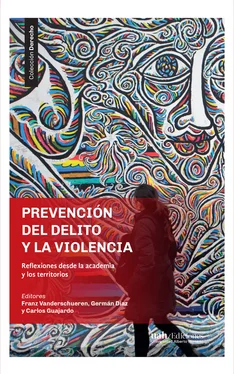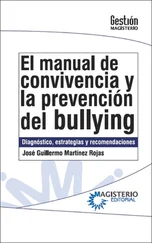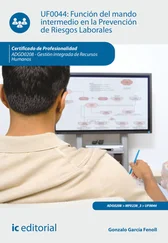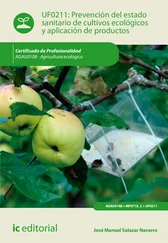DeNunzio, D. Roper v. Simmons’ (2006). Ohio Northern University Law Review, 32, 369-379.
Diamond, A., Barnett, W. S., Thomas, J., y Munro, S. (2007). Preschool program improves cognitive control. Science (New York, NY), 318 (5855), 1387.
Diamond, A. (2010). The evidence base for improving school outcomes by addressing the whole child and by addressing skills and attitudes, not just content. Early education and development 21.5: 780-793.
Diamond, A. y Kathleen Lee (2011). Interventions shown to aid executive function development in children 4 to 12 years old. Science 333.6045: 959-964.
Diamond, A. (2015). Effects of physical exercise on executive functions: going beyond simply moving to moving with thought. Annals of sports medicine and research 2.1: 1011.
Edmiston, E. E., Wang, F., Mazure, C. M., Guiney, J., Sinha, R., Mayes, L. C. y Blumberg, H. P. (2011). Corticostriatal-limbic gray matter morphology in adolescents with self-reported exposure to childhood maltreatment. Archives of pediatrics & adolescent medicine, 165 (12), 1069-1077.
Fabio, A., Tu, L. C., Loeber, R. y Cohen, J. (2011). Neighborhood socioeconomic disadvantage and the shape of the age-crime curve. American Journal of Public Health, 101(S1), S325-S332.
Fleischman, John. (2002). Phineas Gage: a gruesome but true story about brain science. Boston: Houghton Mifflin.
Galbally, M., Lewis, A. J., Ijzendoorn, M. V. y Permezel, M. (2011). The role of oxytocin in mother-infant relations: a systematic review of human studies. Harvard Review of Psychiatry, 19 (1), 1-14.
Gogtay, N., Giedd, J. N., Lusk, L., Hayashi, K. M., Greenstein, D., Vaituzis, A. C. y Rapoport, J. L. (2004). Dynamic mapping of human cortical development during childhood through early adulthood. Proceedings of the National Academy of Sciences, 101(21), 8174-8179.
Harlow, John Martyn (1848). “Passage of an iron rod through the head”. Boston Medical and Surgical Journal 39: 389-393 (Republicado en Journal of Neuropsychiatry and Clinical Neuroscience 11, 281-283; y en Macmillan 2000).
Henggeler S. W., Sheidow A. J. (2012). Empirically supported family-based treatments for conduct disorder and deliquency in adolesents. Journal of Marital and Family Therapy 38 (1): 30-58.
Hoeve, M., Stams, G. J. J., van der Put, C. E., Dubas, J. S., van der Laan, P. H. y Gerris, J. R. (2012). A meta-analysis of attachment to parents and delinquency. Journal of abnormal child psychology, 40 (5), 771-785.
Jolliffe D., Farrington, DP. (2009). A systematic review of the relationship between childhood impulsiveness and later violence. En: McMurran M, Howard R (eds.) Personality, personality disorder, and violence. Wiley, New York, pp. 41-62.
Kandel, E. R., Schwartz, J. H., Jessell, T. M. y Agud Aparicio, J. L. (2001). Principios de neurociencia (4ª ed., 1ª ed. en español.). Madrid: McGraw-Hill Interamericana de España.
Larzelere, R. E. y Patterson, G. R. (1990). Parental management: Mediator of the effect of socioeconomic status on early delinquency. Criminology, 28 (2), 301-324.
Loeber R., Farrington D. P. (2014). Age-Crime Curve. En: Bruinsma G., Weisburd D. (eds.) Encyclopedia of Criminology and Criminal Justice. Springer, New York, NY.
MacDonald, K. y MacDonald, T. M. The peptide that binds: a systematic review of oxytocin and its prosocial effects in humans. Harvard review of psychiatry 18.1 (2010): 1-21.
MacLean, Paul. (1990) The Triune Brain in Evolution (Role in Paleocerebral Functions). Plenum Press, New York.
Markowitsch, H. (2008). Neuroscience and crime. Neurocase. 14. 1-6.
Moffitt, T. E. y Caspi, A. (2001). Childhood predictors differentiate life-course persistent and adolescence-limited antisocial pathways among males and females. Development and psychopathology, 13 (2), 355-375.
Moffitt, T. E., Arseneault, L., Belsky, D., Dickson, N., Hancox, R. J., Harrington, H. y Sears, M. R. (2011). A gradient of childhood self-control predicts health, wealth, and public safety. Proceedings of the National Academy of Sciences, 108 (7), 2693-2698.
Roper v. Simmons (2005). 125 S. Ct. 1183, 1195.
Sampson, R. J., Morenoff, J. D. y Raudenbush, S. (2005). Social anatomy of racial and ethnic disparities in violence. American journal of public health, 95 (2), 224-232.
Sitnick, S. L., Shaw, D. S., Weaver, C. M., Shelleby, E. C., Choe, D. E., Reuben, J. D. y Taraban, L. (2017). Early Childhood Predictors of Severe Youth Violence in Low‐Income Male Adolescents. Child development, 88 (1), 27-40.
Stuss, D. y Knight, Robert. (2013). Principles of Frontal Lobe Function. OUP USA.
Swain, J. E., Kim, P., Spicer, J., Ho., S. S., Dayton, C. J., Elmadih, A. y Abel, K. M. (2014). Approaching the biology of human parental attachment: Brain imaging, oxytocin and coordinated assessments of mothers and fathers. Brain research, 1580, 78-101.
Trumbetta, S. L., Seltzer, B. K., Gottesman, I. I. y McIntyre, K. M. (2010). Mortality predictors in a 60-year follow-up of adolescent males: exploring delinquency, socioeconomic status, IQ, high-school drop-out status, and personality. Psychosomatic medicine, 72 (1), 46-52.
White, J. L., Moffitt, T. E., Earls, F., Robins, L. y Silva, P. A. (1990). How early can we tell? Predictors of childhood conduct disorder and adolescent delinquency. Criminology, 28 (4), 507-535.
Конец ознакомительного фрагмента.
Текст предоставлен ООО «ЛитРес».
Прочитайте эту книгу целиком, купив полную легальную версию на ЛитРес.
Безопасно оплатить книгу можно банковской картой Visa, MasterCard, Maestro, со счета мобильного телефона, с платежного терминала, в салоне МТС или Связной, через PayPal, WebMoney, Яндекс.Деньги, QIWI Кошелек, бонусными картами или другим удобным Вам способом.












